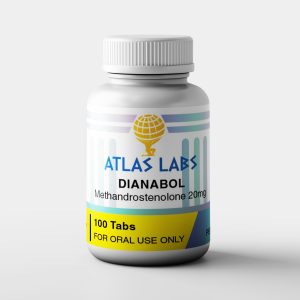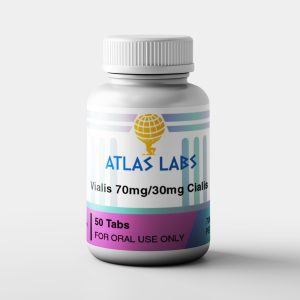For many steroid users, hair loss is one of the most frustrating side effects — often appearing just as your physique starts to look its best. Whether it’s a receding hairline, thinning crown, or increased shedding during a cycle, the question arises: Are steroids to blame? The truth is, some anabolic compounds are much harsher on your hair than others, especially if you’re genetically predisposed to male pattern baldness. But that doesn’t mean you’re helpless.
Why Do Steroids Cause Hair Loss?
Most cases of steroid-related hair loss are driven by a hormone called dihydrotestosterone (DHT). DHT is a more potent form of testosterone created when testosterone interacts with the enzyme 5-alpha reductase. While DHT plays a crucial role in male development, it also attaches to androgen receptors in hair follicles — particularly on the scalp — and over time, can shrink those follicles, shorten the hair growth cycle, and cause thinning or shedding. This process is especially aggressive if you already carry the genes for androgenetic alopecia.
Steroids that either convert into DHT or are derived from DHT compounds will naturally raise DHT levels in your body, increasing the likelihood of hair loss.
Which Steroids Are Most Likely to Trigger Shedding?
Some anabolic steroids are more androgenic than others — meaning they bind more strongly to androgen receptors and are more likely to affect your hair. Winstrol (Stanozolol), for example, is notorious for its hair loss potential. It’s a DHT-derived compound and doesn’t aromatize (convert to estrogen), so there’s nothing to counterbalance its androgenic punch. Users often report hair shedding just weeks into a Winstrol cycle, even at moderate doses.
Another culprit is Masteron (Drostanolone) — also a DHT derivative — often used in cutting cycles for its dry, hard look. While effective, its androgenic strength can spell disaster for those concerned with hairline integrity. Similarly, Anavar (Oxandrolone) may seem “mild” in terms of gains, but being a DHT-based oral steroid, it still carries a real risk of hair thinning over time, especially if doses creep higher than therapeutic ranges.
Even testosterone itself, despite being the body’s natural anabolic hormone, becomes problematic at supraphysiological levels. When your body is flooded with testosterone, more of it gets converted to DHT via 5-alpha reductase. Over time, that extra DHT can lead to hair follicle miniaturization. The effect is typically dose-dependent — meaning the higher the dose of testosterone, the greater the risk of hair loss.
Other compounds like Dianabol and Trenbolone can also contribute, although via different mechanisms. Dianabol doesn’t directly convert to DHT, but its androgenic effects can still stress the scalp. Trenbolone, while not DHT-derived, is extremely androgenic and strongly binds to receptors, making it another high-risk choice.
Are Any Steroids Safer for Hair?
While no steroid is completely “safe” for your hairline if you’re genetically predisposed to balding, some compounds are less likely to cause hair loss. For example, Nandrolone (Deca-Durabolin) tends to have a lower conversion rate to DHT and may even be mildly protective in the scalp due to its interaction with a less aggressive metabolite called DHN.
Another relatively gentle option is Equipoise (Boldenone Undecylenate), which is less androgenic and has minimal impact on DHT levels. Additionally, keeping testosterone doses in the TRT range (100–150mg/week) instead of blasting large amounts can help you avoid spikes in DHT production altogether.
Still, individual response varies. Some users may tolerate harsh compounds like Winstrol without noticeable shedding, while others start thinning with even low-dose testosterone. Your genetics play a huge role.
How to Prevent Hair Loss on Cycle
If you’re going to run a cycle and want to minimize hair loss, your first line of defense is controlling DHT. One of the most common pharmaceutical approaches is using a 5-alpha reductase inhibitor like finasteride or dutasteride. These drugs block the conversion of testosterone to DHT, effectively lowering the androgen load on your scalp. That said, these medications only work with compounds that convert to DHT — meaning they’ll help if you’re running testosterone or Dianabol, but won’t protect you from DHT-derived steroids like Winstrol or Masteron.
Another key strategy is topical minoxidil, also known as Rogaine. It doesn’t reduce DHT but works by increasing blood flow to the scalp and prolonging the hair growth phase. It’s widely available over the counter and can be used both during and after a cycle. Ketoconazole shampoo (commonly sold as Nizoral) may also help by reducing scalp inflammation and having mild anti-DHT properties.
Some users also swear by microneedling — using a derma roller on the scalp to stimulate growth and enhance minoxidil absorption. This technique is backed by some research and anecdotal success, though it takes consistency and time to see results.
Lastly, consider adjusting your cycle. Avoid stacking multiple DHT-based steroids and keep dosages moderate. You can still make great progress without maxing out your androgen load.
The Bottom Line
If you’re prone to male pattern baldness, using anabolic steroids can accelerate the process — sometimes drastically. The biggest offenders are DHT-derived compounds like Winstrol, Masteron, and Anavar, but even testosterone can be problematic at high doses. Fortunately, there are ways to minimize the damage.
Using DHT-blocking medications, maintaining good scalp health, and choosing compounds with a lower androgenic profile can go a long way toward preserving your hair while still making gains. But ultimately, if hair loss is a serious concern for you, it’s worth weighing whether the trade-off is worth it.
Some people are happy with a bigger physique and a shaved head. Others want the gains without the sacrifice. Whichever camp you fall into, being informed is your best protection.
The information provided in this article is intended for educational and research purposes only. It does not constitute medical advice or a recommendation to use any substances discussed. Always consult with a licensed medical professional before beginning any supplement, peptide, or anabolic steroid protocol.
If you’re interested in exploring high-quality research compounds, you can browse our shop here.

